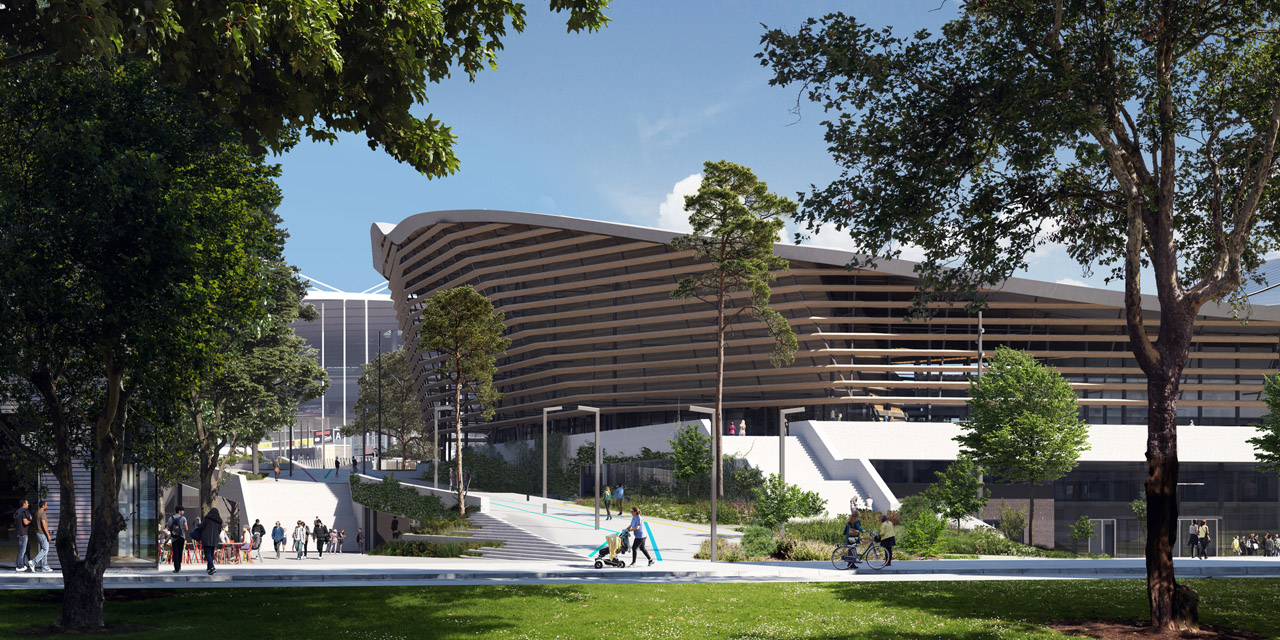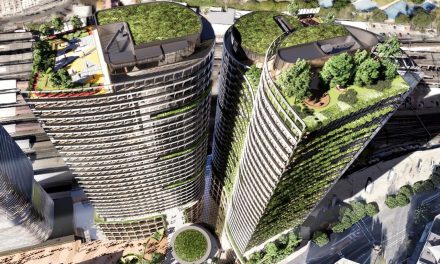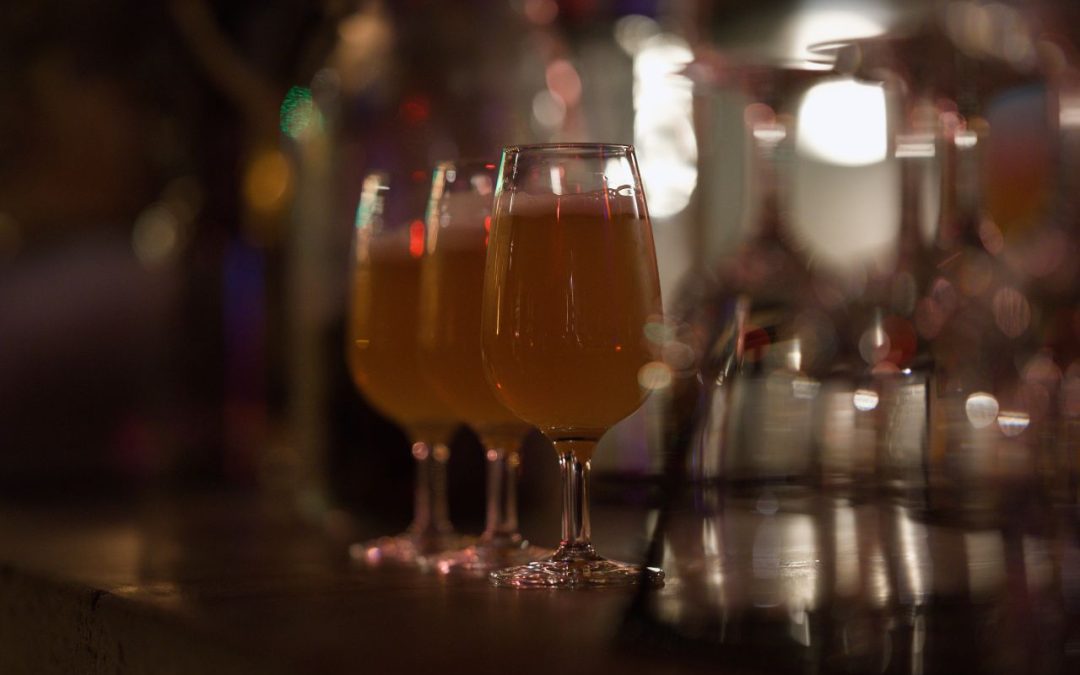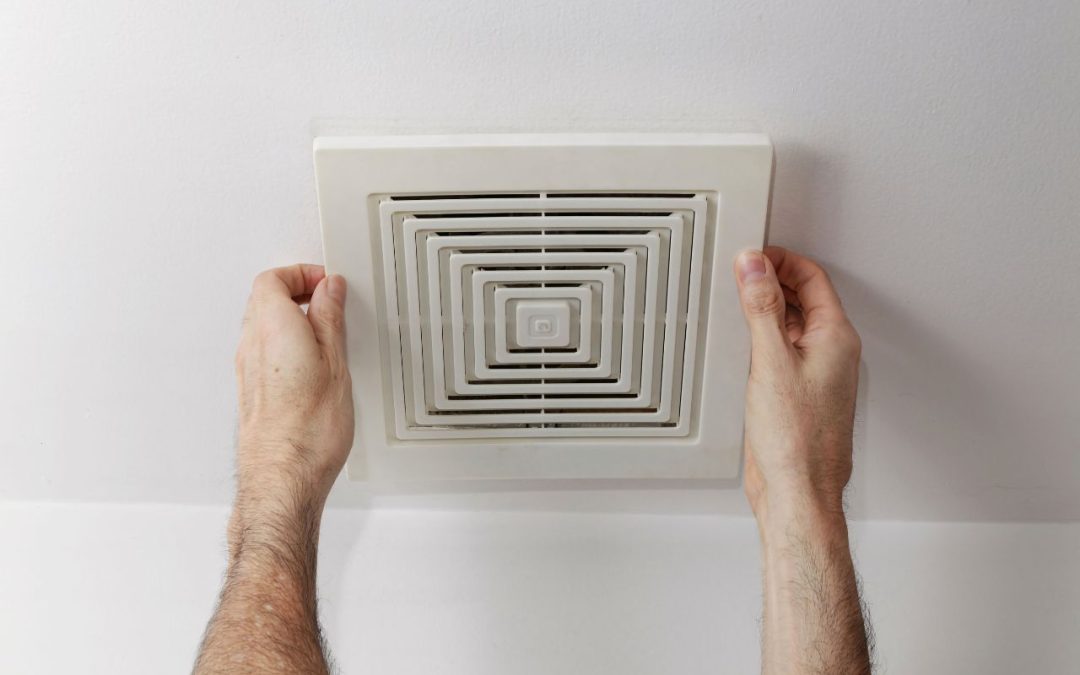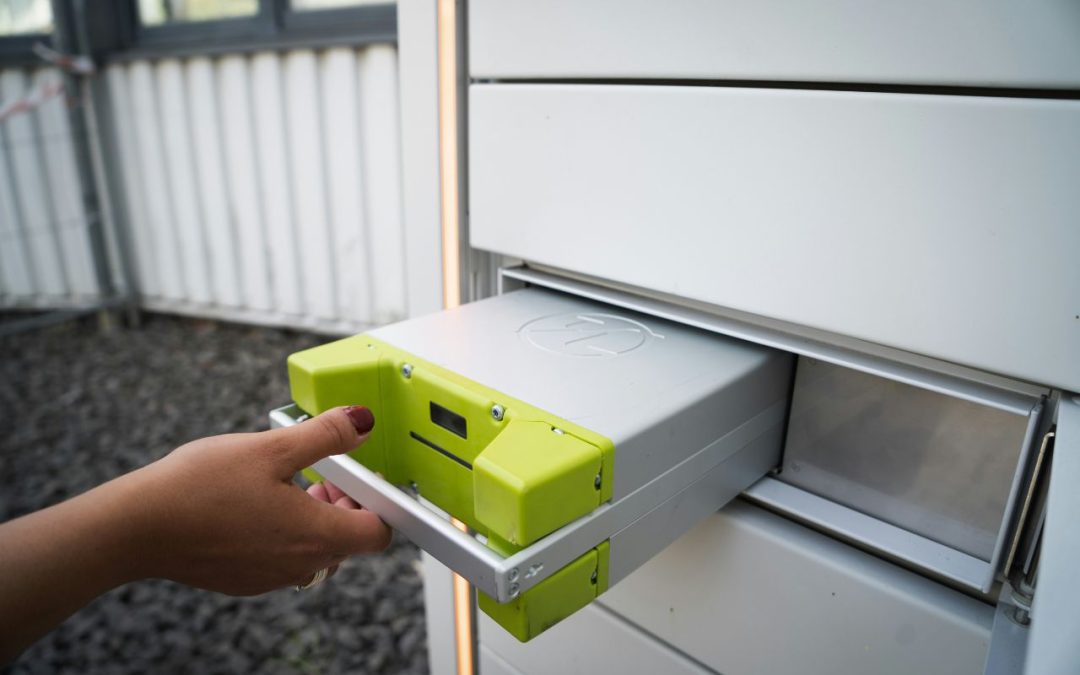Ambitious sustainable targets have been set by the host nation for the Paris 2024 Olympics. The bold aim is to reduce the Games’ carbon footprint by half compared to previous years. Laura Timberlake explores one of the only new buildings constructed for the Games: the Aquatics Centre.
In 2020 the French government announced plans for a new sustainability law, stipulating that all new public buildings must be built using 50 per cent timber or natural materials. The Aquatics Centre for the Paris 2024 Olympics, designed by architects Atelier2/3/4 and VenhoevenC, has been constructed under these new laws. Indeed, it boasts the largest wooden hanging roof in the world.
Adorning this remarkable roof is a 5,000m2 solar farm, one of the biggest in France, which is designed to provide most of the venue’s power needs. The concave design of the roof structure will also reduce the energy expenditure on heating by 20 per cent.
One for all
The centre has been designed to service the local community of Seine-Saint-Denis after the Olympics. It connects to the neighbouring Stade de France via a footbridge over the A1 motorway and is considered a meaningful investment in the community – which previously lacked any sporting facilities.
The multi-sports facility includes two pools, multiple fitness areas and team sports pitches. During the Games, the venue will host the swimming, artistic swimming, water polo and diving events, and can hold about 5,000–6,000 spectators.
Le recycling
Much of the building and its interiors has been constructed using recycled plastics and timbers. The furniture in the bars and restaurants is made from wood waste from nearby construction sites, and the spectator benches have been crafted out of recycled plastic from nearby schools.
Thousands of timber elements were also bought in from around Europe and prefabricated at Alsace, before being delivered and assembled on site in a process likened to a giant Lego set.
“We chose to use wood not only for its technical quality, but also because it is very stable and will last for a hundred years,” says co-designer Cécilia Gross, Architect Partner-Director at VenhoevenCS.
Partner at Ateliers 2/3/4/, Laure Mériaud, told Bloomberg the team wanted to use the least amount of material possible.
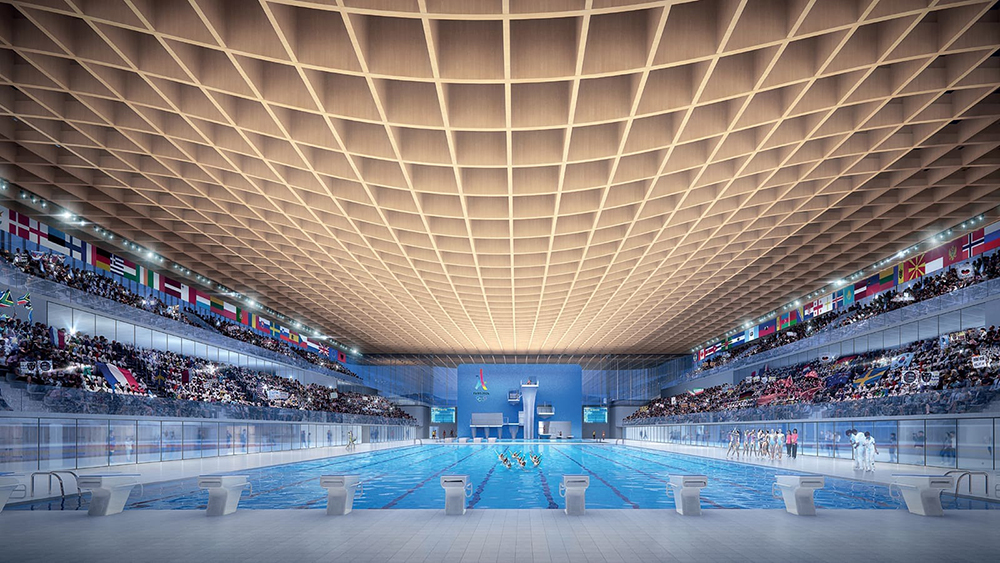
The Aquatics Centre boasts the largest hanging wooden roof in the world.
Only 5 per cent new
Overall, 95 per cent of the Paris Olympics venues either already existed or will be dismantled for reuse after the Games.
At that juncture, the 6,000-seat Aquatics Centre will be converted into a neighbourhood sports facility due to open mid-2025. In this guise it will be equipped with 2,500 seats plus a learner pool, fitness centre, bouldering wall, climbing gym, five-a-side soccer pitches, and padel tennis, basketball and yoga facilities.
Exceptional credentials
The Paris Olympic Aquatics centre has earned the BiodiverCity label and the “exceptional” score for its sports equipment in compliance with NF HQE standards. Unprecedented in its design, 90 per cent of the energy it consumes is of renewable or recovered origin.
For more about the BiodiverCity label, click here.

